Full-body stretching is a great way to become more flexible, increase mobility, and decrease pain. While there are a variety of moves that can help address certain issues (like lower back pain), a psoas stretch may be what you need.
The psoas is an important ribbon-shaped muscle that runs from your lower lumbar spine (the lower back) to the top of the femur (thigh bone), explains exercise physiologist Jim White. It helps to stabilise the hips and spine and plays a crucial role in daily movements like walking, standing, and sitting. Psoas muscle stretches and exercises can go a long way toward alleviating and preventing common aches and pains.
“It’s important to keep the psoas muscle both strong and flexible to maintain optimal posture, movement mechanics and overall functional mobility,” explains physical therapist Melissa Prestipino. “A balanced psoas can help prevent lower back pain, improve athletic performance, and support healthy movement patterns in daily activities.”
Ahead, experts share the best psoas stretches and exercises with step-by-step instructions.
Best stretches for the psoas muscle
Psoas stretch
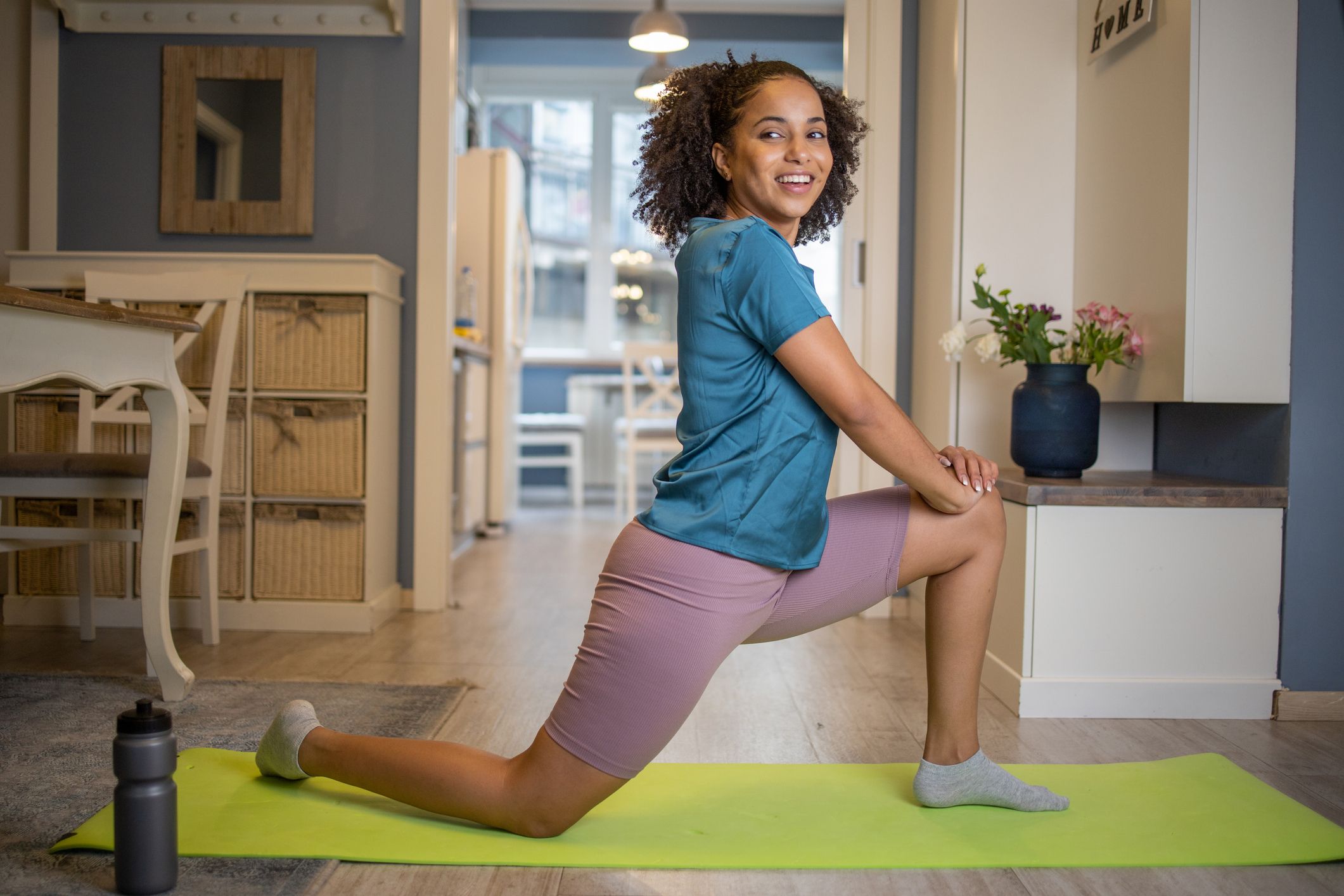
Prestinpino explains that this stretch helps to lengthen and relax the psoas muscle.
- Kneel on one knee, with the other foot flat on the floor in front.
- Lean forward, keeping your back straight, to feel a stretch in the front of the hip.
- Hold for 30 seconds to 1 minute.
- Repeat on the other side.
Supine psoas stretch
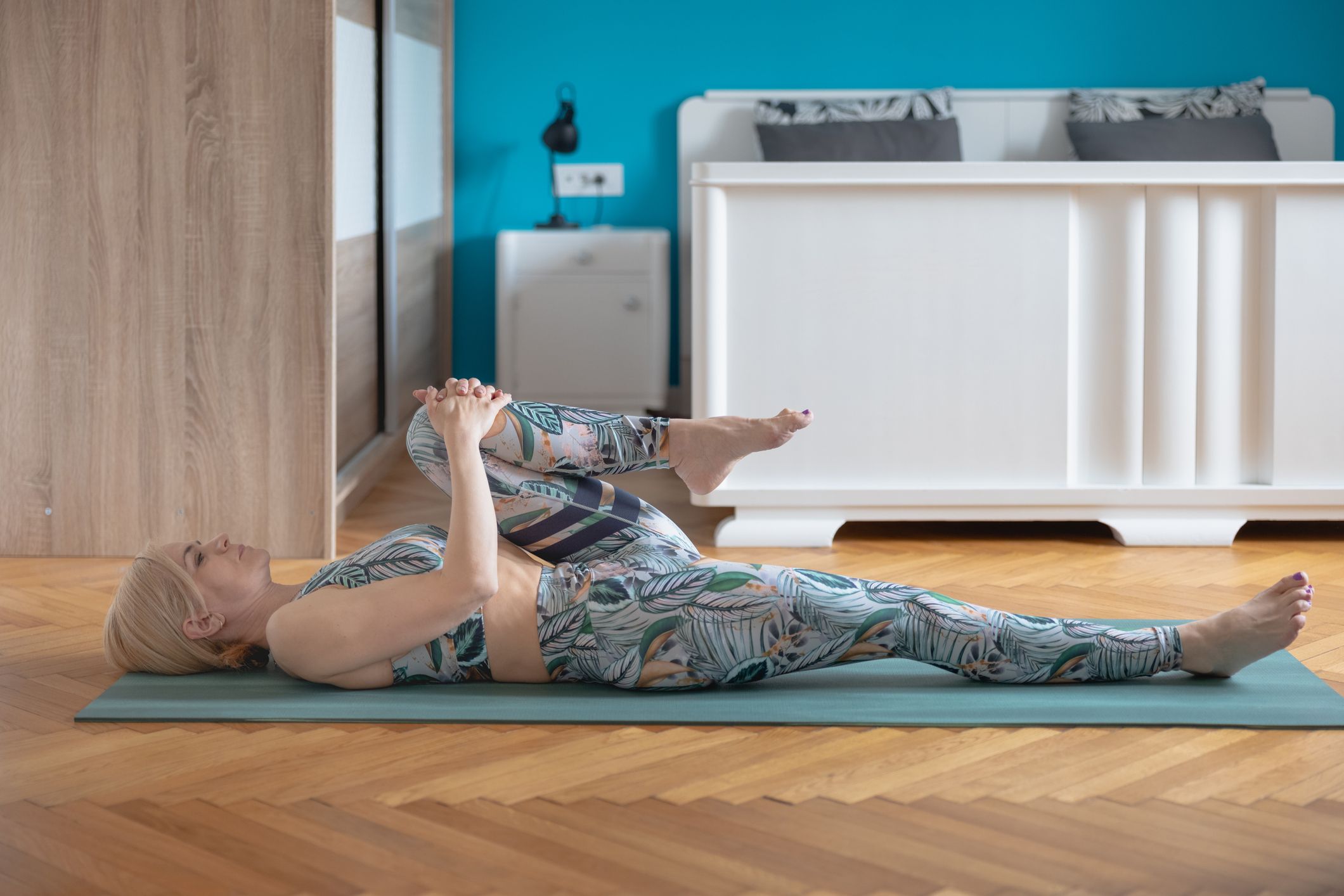
The lying version of the above exercise allows for a deeper stretch, Prestipino says.
- Lie on your back.
- Bring one knee towards your chest, holding it with both hands.
- Slowly straighten the other leg along the floor to feel a stretch in the front of the hip.
- Hold for 30 seconds to 1 minute.
- Repeat on the other side.
Standing psoas stretch
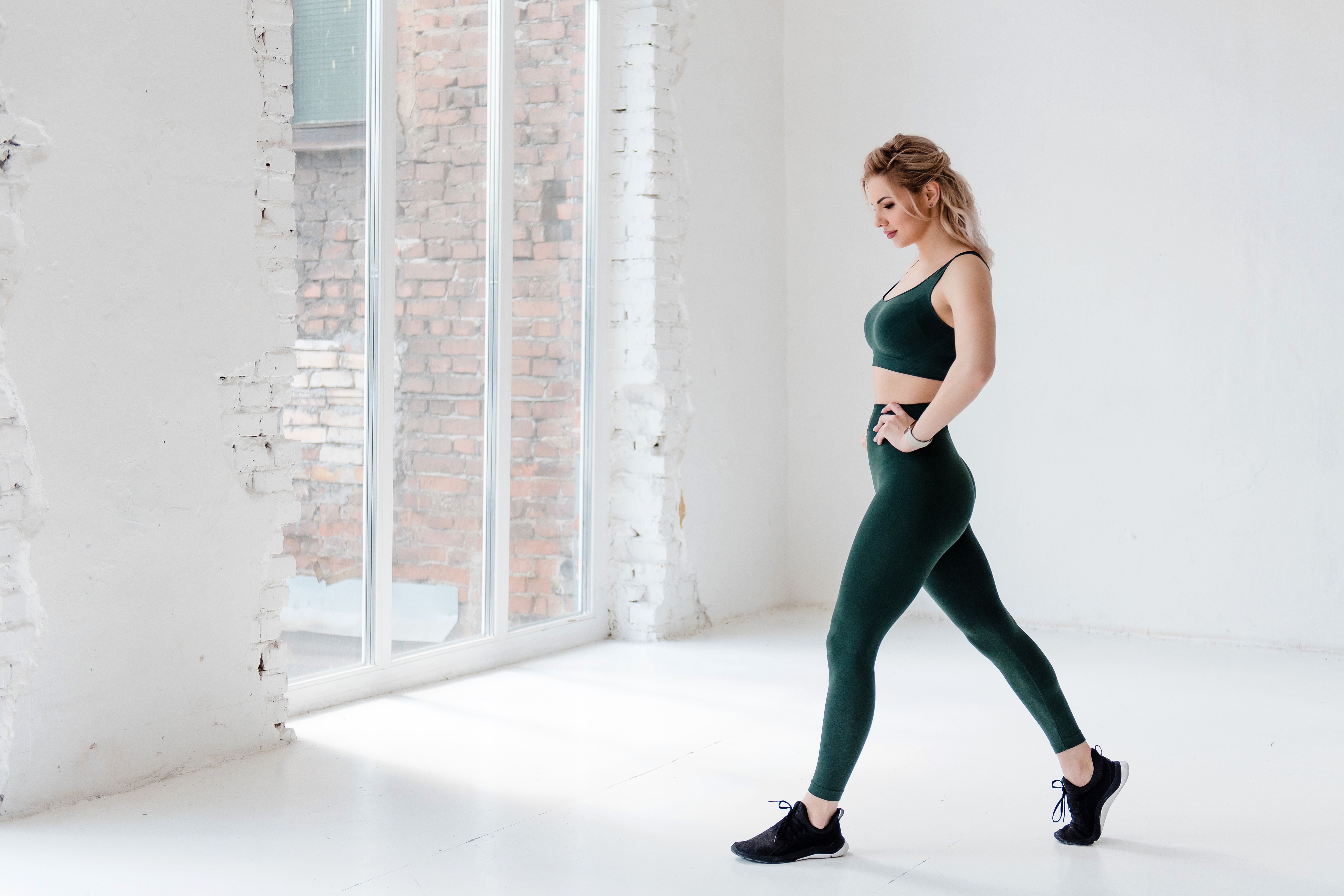
Prestipino suggests trying this stretch because it “targets the psoas while also stretching the hip flexors.”
- Stand with one foot forward and one foot back.
- Bend your front knee and tilt your pelvis forward to feel a stretch in the front of the hip of the back leg.
- Hold for 30 seconds to 1 minute.
- Repeat on the other side.
Leg raises

This exercise is great for strengthening the psoas muscle and hip flexors, Prestipino says.
- Lie on your back.
- Lift one leg off the floor while keeping it straight.
- Hold for a few seconds, then lower it back down.
- Repeat on the other leg.
Bridge pose

Both White and Prestipino suggest adding this yoga pose to your routine. It helps to strengthen the psoas muscle, glutes, and lower back.
- Lie on your back.
- Bend your knees and lift your hips toward the ceiling.
- Hold for a few breaths, then lower the hips back down to the ground.
- Repeat three to four times.
Quadricep stretch
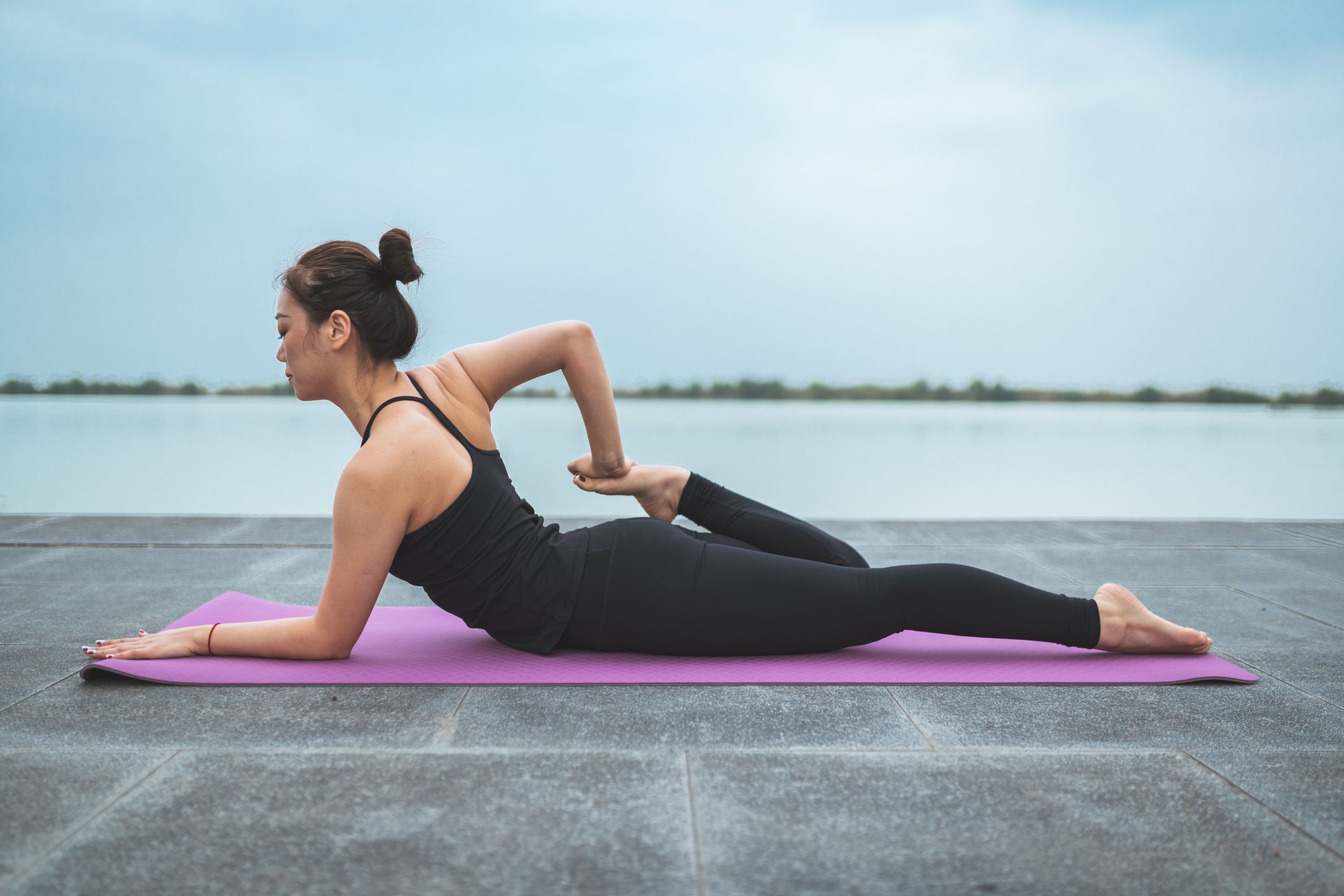
This stretch, recommended by White, helps lengthen the muscles along the front of the leg and hips, which can reduce psoas muscle tension.
- Lie on your stomach and rest your head on your hand.
- Bend your leg toward your head and grab your foot to stretch out the quads.
- If this is too intense, feel free to lift your chest and support your upper body with your forearm.
- If your hamstring muscle tightens up, release your leg, wait a moment, and repeat the movement.
- Repeat on the other side.
Lunge stretch
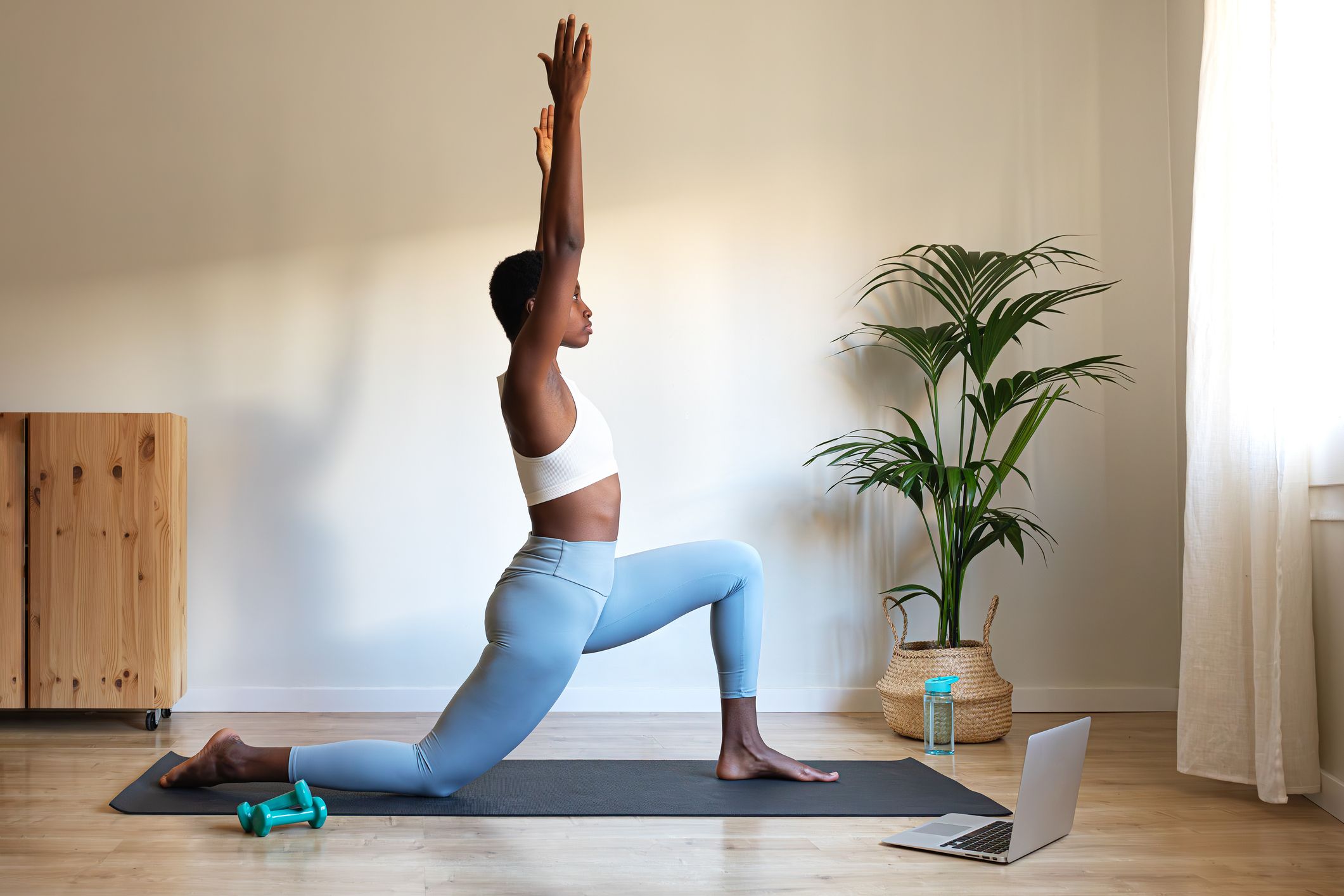
With this lunge stretch, “you’ll feel a great stretch from the psoas down your quads,” White explains.
- Get into a lunge with your knee resting on the floor.
- Rotate your hips slightly backward (posterior tilt) to activate the psoas stretch and hold for a few breaths.
- Slightly rotate out to open up your hips and hold for a few breaths.
- Repeat on the other side.
Camel pose
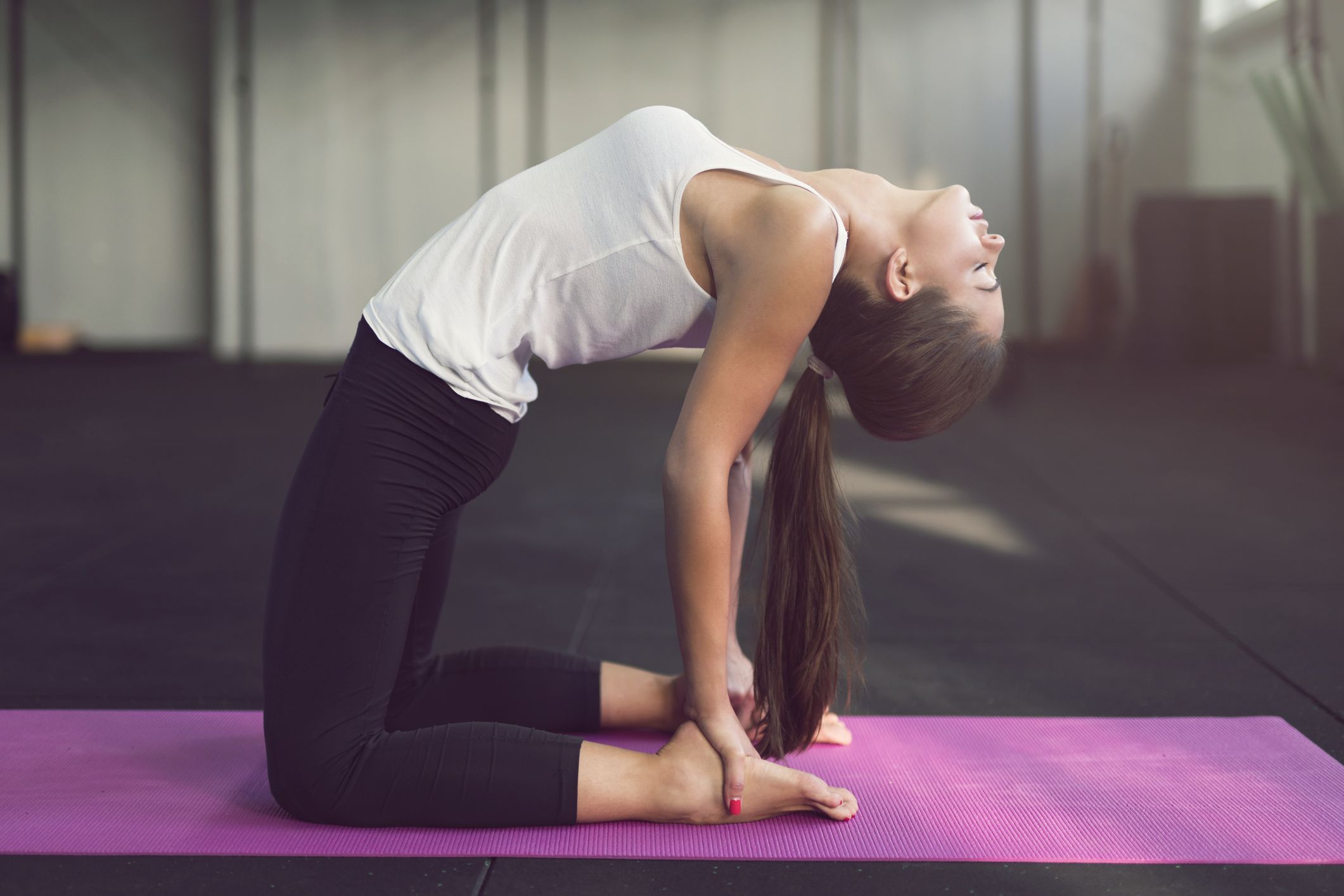
The camel pose, recommended by White, has many full-body benefits. Not only does it help stretch and lengthen the front of the body, it aids in strengthening the core, lower back, glutes and hips.
- In a kneeling position, make sure your hips are positioned over your knees.
- Slowly extend backward, reaching your hands toward your feet, one hand at a time.
- Rest your fingers on your heels or ankles for stability (or keep your hands on your upper glutes and lower back if this is more comfortable).
- Keep your chin tucked and chest up while engaging your glutes to stabilise your lumbar spine and stretch your hips.
What causes psoas pain and tightness?
Pain and tightness in the psoas muscle are unfortunately very common and have a number of causes. Aside from injury or trauma to the hips or lower back, Prestipino explains that “prolonged sitting, poor posture and overuse during activities like running or cycling” are usual culprits.
White adds that in addition to overuse and inactivity, osteoarthritis and rheumatoid arthritis can also contribute to pain and stiffness in the psoas muscle and surrounding muscles. Be sure to see a medical professional if you are concerned about the pain, and to get a proper diagnosis.









